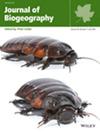Community Analysis Reveals Biogeographical Patterns and Biodiversity Shortfalls in Antarctic Tardigrades
Abstract
Aim
Tardigrades are important members of Antarctic metazoan communities with many endemic species. Major biogeographic patterns of Antarctic fauna have been identified, in particular regarding the zonation across the Gressitt line, dividing Continental and Peninsular Antarctica. Evidences suggest that Antarctic tardigrades follow this zonation too, but this has never been rigorously tested.
Location
Limnoterrestrial ecosystems of Antarctica.
Time Period
1950 to Present.
Major Taxa Studied
Tardigrades.
Methods
Records of tardigrades from Antarctica were collected and their taxonomy and coordinates harmonised. Alpha and Beta diversity measures were calculated and compared across different Antarctica biogeographic areas, in particular across the Gressitt line. Analyses were repeated at different spatial scales to ensure their robustness.
Results
Tardigrades communities are different both in terms of alpha and beta diversity across the Gressitt line. Results were consistent across the analyses at different spatial scales. Taxa richness was higher in the Antarctic Peninsula compared to the Continental Antarctica. Sampling effort had a substantial effect on the measured richness. Despite having a significant effect, Gressitt line side and biogeographic areas explained a low amount of variance.
Main Conclusions
The presence of a different Tardigrade communities composition across the Gressitt line is supported, and a geographical structure is present also at smaller scales. This geographic structuring suggests local endemisms and calls for attention to eventual effects of climate change on tardigrades communities. Faunistic data on Antarctica is still far from being exhaustive and Linnean and Wallacean biodiversity shortfalls are the two most immediate issues to be solved to have a more reliable estimation of the true Antarctic tardigrades biodiversity.


 求助内容:
求助内容: 应助结果提醒方式:
应助结果提醒方式:


